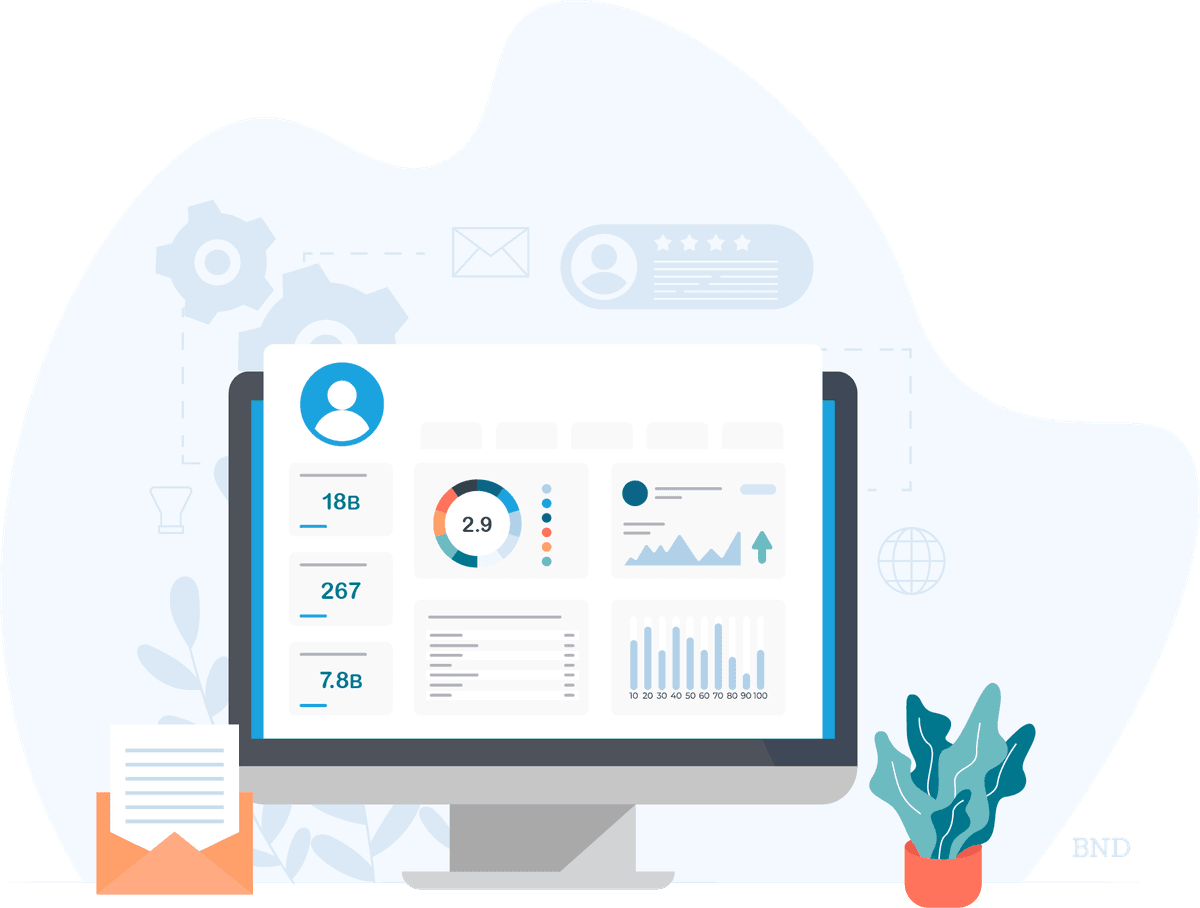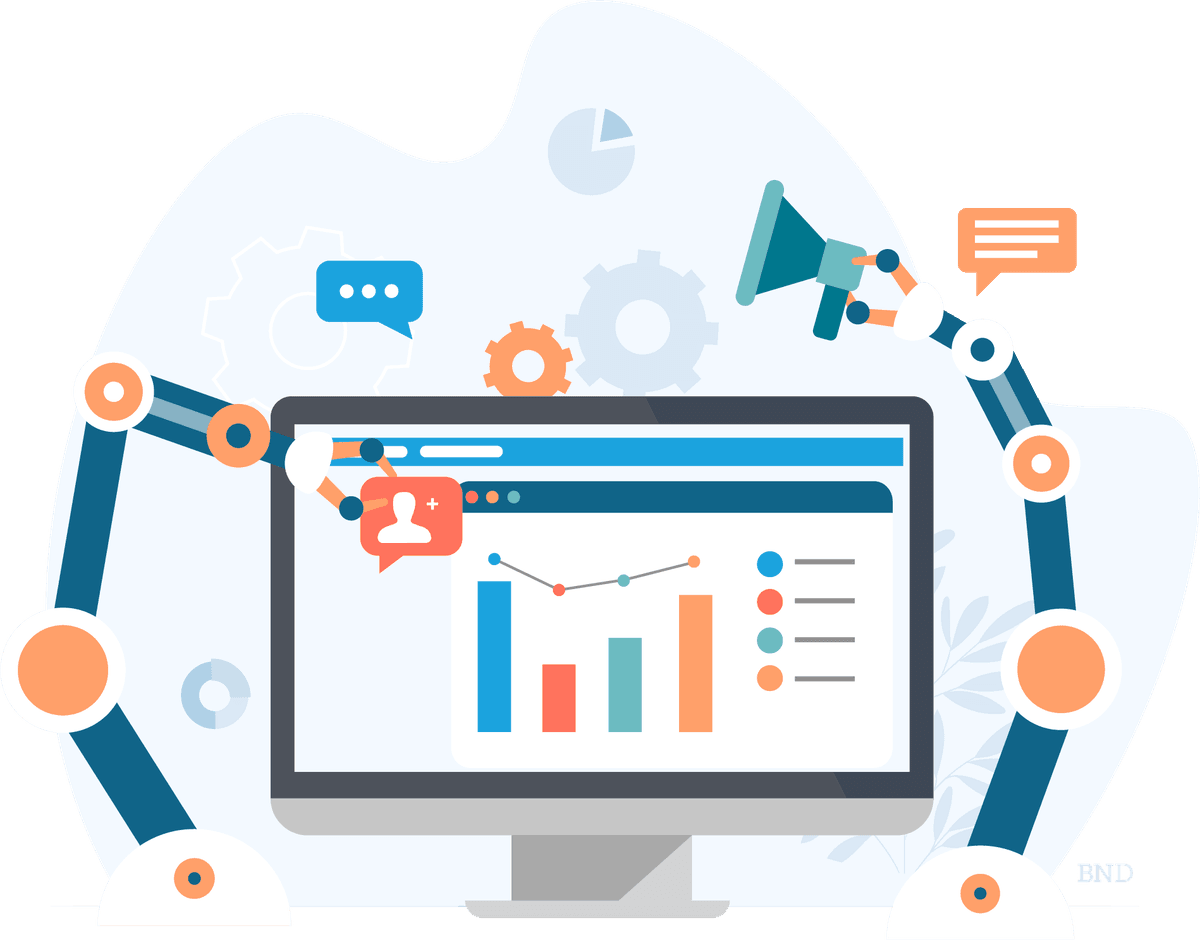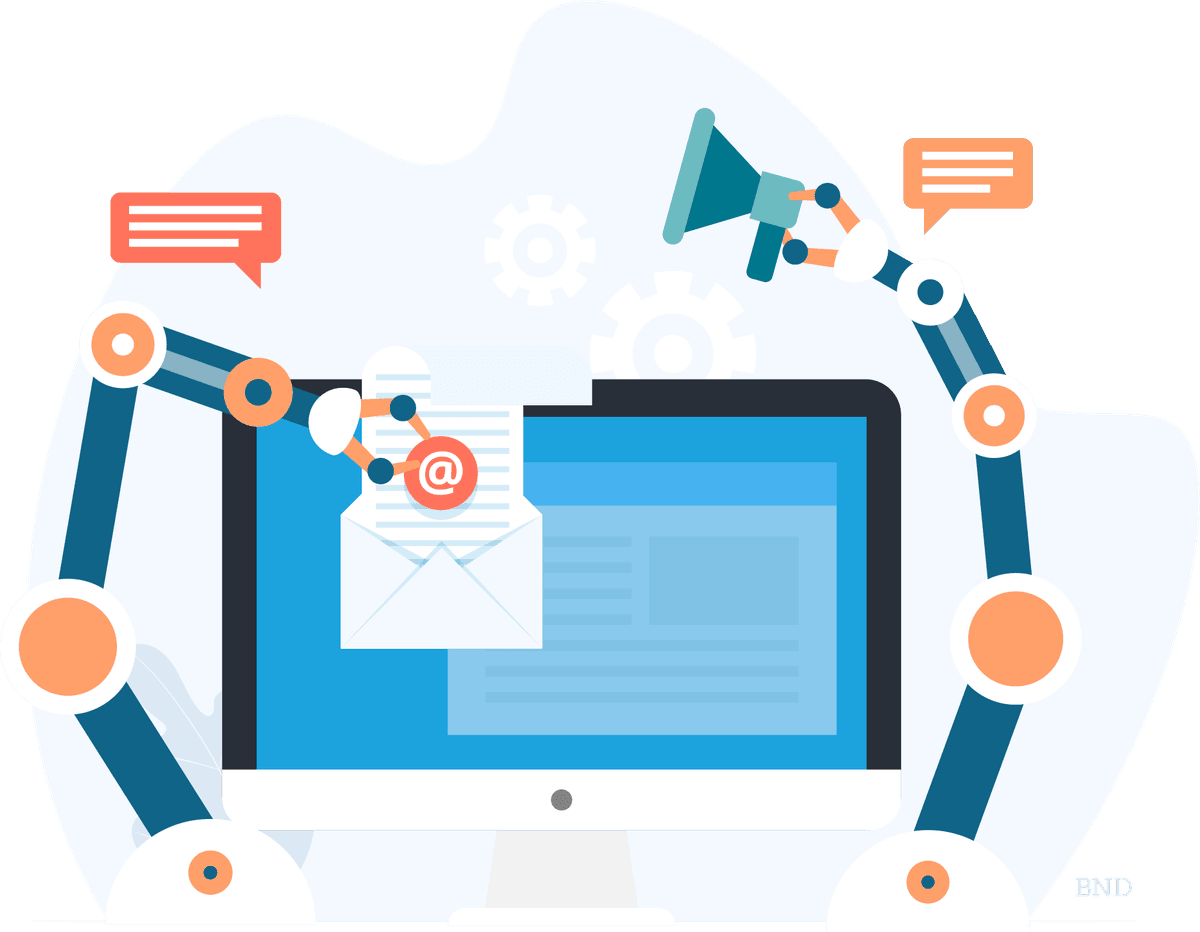Business News Daily provides resources, advice and product reviews to drive business growth. Our mission is to equip business owners with the knowledge and confidence to make informed decisions. As part of that, we recommend products and services for their success.
We collaborate with business-to-business vendors, connecting them with potential buyers. In some cases, we earn commissions when sales are made through our referrals. These financial relationships support our content but do not dictate our recommendations. Our editorial team independently evaluates products based on thousands of hours of research. We are committed to providing trustworthy advice for businesses. Learn more about our full process and see who our partners are here.
CRM vs. Marketing Automation: What’s the Difference?
While CRM and marketing automation seem similar, there are key differences between the two types of software.

Table of Contents
While customer relationship management (CRM) and marketing automation software may seem similar, they provide different functions and serve separate purposes and the two types of software are even more effective when they are used together. Read on to learn what CRM and marketing automation are, how they work and why your small business should integrate these systems.
What is a CRM?

CRM software is a tool that handles contact and sales management, agent productivity and customer relationships across the entire sales funnel, from email marketing to customer service interactions.
A CRM also stores information about your customers, such as how long they have been a customer, their purchase records and notes on phone conversations. You can use a CRM to optimize your interactions with customers, increase sales and customer satisfaction and streamline processes. [Related article: Choosing CRM Software]
A CRM can be used by almost anyone in your organization and stores the data from all departments in one easy-to-access location.
How does CRM software work?
A CRM works by tracking the actions of active or potential customers through your business’s social media accounts, email or website; gathering information; and guiding each contact through a customer journey, such as by sending a triggered email or alerting an employee of the customer’s interest.
What are the benefits of CRM software?
There are many benefits to using a CRM system, which can ultimately save your business time and money. A CRM can also increase your chances of converting leads to customers. Here are some of the major benefits of using a CRM platform:
Organization
One of the biggest benefits of a CRM is that it tracks and organizes your contacts automatically after you put in basic information, like a phone number, name and email address. The CRM serves as a central repository of information that all members of your organization can access and use to improve customer service and generate more leads for the business.
Task tracking
A CRM can also integrate your company’s typical workflow and help your employees save time on everyday responsibilities by automating time-consuming tasks. It can also boost customer engagement by making it easier to send consistent, targeted messaging.
Increased sales opportunities
A CRM tracks the purchasing patterns of your existing customers and provides insight into themes and trends, which you can then use to develop marketing and lead generation plans that have a higher chance of attracting new leads and customers.
Centralized sales progress tracking
With a CRM system, you can track sales progress across your entire organization and see areas that need improvement, track customer journeys, close gaps and assign leads to sales representatives easily.
Personalized communication
Most CRM platforms also offer tools for personalizing your messaging to customers ― a tactic that has been proven to help increase lead conversion. In research from Salesforce, 73% of consumers said that businesses should understand their personal needs and expectations. You can add customers’ names to your emails, target campaigns based on their customer behavior or send emails based on where they are in their customer journey.
Examples of CRM systems
Here are some of the most popular CRM platforms.
Salesforce
Salesforce is a cloud computing software-as-a-service company that specializes in CRM. The platform allows your marketing, sales, commerce, service and information technology teams to work together seamlessly through the company’s Customer 360 tool. Read our Salesforce review to learn more about what’s arguably the leading name in CRM.
HubSpot
HubSpot offers a free CRM tool that provides real-time updates on your sales pipeline via a virtual dashboard, support for up to 1 million contacts, deal tracking and company insights. Our HubSpot review details the features that have long made this vendor a top name in the CRM space.
Freshsales by Freshworks
Freshsales provides artificial intelligence (AI)-powered lead scoring; phone, email and activity capturing; a centralized, 360-degree view of customers; and targeted messaging. Learn more via our Freshsales CRM review.
Pipedrive
Pipedrive is a user-friendly CRM that includes lead management, communication tracking, automation and a mobile app for managing your contacts from anywhere. The company offers a 14-day free trial. Dive into our Pipedrive review to explore everything you get with this CRM.
What is marketing automation?

Marketing automation is a system used to streamline, analyze and automate key marketing tasks and workflows, including segmentation, lead generation, capture and nurturing, relationship marketing, customer retention and account-based marketing. Marketing automation is mostly used to speed up processes and eliminate time-wasting tasks as well as to create personalized, targeted marketing campaigns to send to your customers. [Related article: Marketing Automation Buyer’s Guide]
Marketing automation helps your business focus on creating better customer experiences by allowing you to nurture leads with targeted content. It can be used to increase your production, track and optimize customer engagement, convert leads into customers, qualify leads and increase efficiency within your company’s workflow.
How does marketing automation work?
As the term suggests, marketing automation works by automating key marketing tasks. The point of the software is to free up resources in your business, thereby saving your business time and money and allowing you to explore better targeting strategies.
Marketing automation software has four main components:
- Central marketing database: This is where all data on prospective leads, customer interactions and user behavior is stored and analyzed.
- Engagement marketing engine: This is where you create, manage and automate your marketing processes.
- Analytics engine: As the name suggests, this is where you test, measure and optimize your marketing return on investment and revenue impacts, as well as view areas for improvement. You might discover, for example, stones unturned in your social media strategy.
- Marketing technology stack: The marketing technology stack (or martech stack, for short) is a collection of any other applications you use to accomplish your marketing goals, such as SaaS platforms, social media tools and content management systems.
What are the benefits of marketing automation?
The best marketing automation platforms can provide a wealth of benefits for your company, including the following.
Higher conversion rates
Marketing automation software can help boost your conversion rates by ensuring that your content is sent only to customers who are interested in your business and helping you craft applicable and engaging content.
Improved workflow
A major benefit of marketing automation software is that it identifies problems in your workflows and helps to streamline processes by assigning and tracking tasks, sending team member alerts, automating schedules and facilitating easy inter-team communication.
Increased productivity
The main purpose of marketing automation software is to reduce the number of tedious tasks for your employees by automating them, which allows employees to spend their time focusing on other, more important tasks. The automation process can even help boost employee satisfaction and engagement by making employees’ jobs easier.
Personalized buying journey
Personalized, targeted content is a great way to reach new customers and retain existing ones and marketing automation software can help you ensure that all of your marketing content is personalized to each customer by collecting customer information, analyzing user behavior and capturing data that can be used in marketing campaigns.
Higher-quality leads
More leads are not necessarily better. Focus on quality, rather than quantity, because high-quality leads have a higher chance of being converted to faithful customers. Through a unique lead scoring system, marketing automation software helps you identify the leads that are most likely to be converted.
Marketing automation examples
Here are some popular marketing automation software providers.
OMI
OMI assists you in building a marketing automation system that’s easy to use and heavily automated. You’ll get lead scoring and data analysis tools you can use to inform your email targeting, social media strategy and lead generation pages.
Adobe Marketo Engage
Adobe Marketo Engage allows you to engage with the right customers via behavior tracking, build and scale automated marketing campaigns and determine how your marketing channels affect revenue.
Ortto
Ortto offers a visual take on marketing automation software, with a 14-day free trial, lead scoring, AI-based omnichannel messaging and uniquely designed customer experiences among its key features.
How CRM and marketing automation work together

While they are two different systems that are used for different purposes, CRM and marketing automation software are often used in tandem to maximize their benefits and combine their strengths.
Using marketing automation tools alongside your CRM means you can share all the information you collect from customers and lead interactions with your marketing team. A CRM platform acts as a powerful sales tool and source of data that can improve your marketing campaigns, helping you target the audience that will drive a return on your marketing spend.
To understand how CRM and marketing automation work together, you must first understand their differences. CRM is mostly used as a sales tool, whereas marketing automation is a lead generation and nurturing tool. As such, using them together allows you to:
- Build a relationship before sending a lead to sales
- Run closed-loop reporting to see the whole picture of what’s working and what isn’t
- Assign lead scores
- Provide leads with a seamless journey from visitor to customer
- Help sales reps see the full picture of a lead journey with your company
- Provide consistent messaging to support and nurture leads
How to integrate CRM and marketing automation software
To get the best results from the integration of your CRM and marketing automation software, you need to make sure the two platforms are aligned properly and working together seamlessly to accomplish your goals. Here are four tips for integrating your CRM and marketing automation platforms.
1. Personalize your marketing and sales messaging.
Using a CRM and marketing automation software in conjunction to personalize your messaging from the beginning can help you target your audience and ensure the conversion of your leads. For example, your CRM will transfer demographic information to your marketing automation tool, which can help eliminate a lot of tedious tasks for your employees. Your marketing team can then use this information to target campaigns and paid advertisements.
2. Establish lead scoring.
Research has shown that the quicker a lead receives a response, the more likely they are to be converted into a customer. Lead scoring via your CRM and marketing automation can help make the process faster and more efficient by using the platforms to identify the users who are most important to your company and most likely to be converted and then sending targeted marketing materials to these leads.
3. Eliminate duplicates.
It’s important to ensure that your marketing automation and CRM software are not overlapping on tasks as this can result in irritated, overwhelmed customers. While unifying your CRM and marketing automation tools can lead to centralized data and easy access, it can also mean accidental duplicate tasks, such as entering a customer’s information twice. Be sure to monitor your system regularly for duplicates because it can annoy customers and even lead to false reporting or compliance issues.
4. Be prepared to adjust your practices.
After you initially integrate your two systems, problems may arise over time. Create a plan for how you will efficiently and cost-effectively identify, implement and fine-tune changes to your marketing and sales efforts as they apply to the software integration.
Examples of CRMs with marketing automation
If you’re looking for a tool with the best of both worlds, consider the following providers, all of which offer systems with both CRM and marketing automation capabilities.
HubSpot
HubSpot is a free, all-in-one platform that offers robust CRM and marketing automation capabilities broken down into six key hubs: Marketing, Sales, Service, CMS, Operations and Commerce. HubSpot encourages users to use all six hubs together to maximize their capabilities and conduct marketing tasks from one centralized location.
Moosend
Moosend is an all-in-one marketing platform that is designed to grow and be scaled alongside your business. The system includes a feature-rich email marketing tool, CRM, marketing automation and reporting and analytics.
Rejoiner
Rejoiner is an email marketing platform that offers CRM, marketing automation, list growth and identification, data consolidation and more. Rejoiner makes it easy to create user-based triggers, centralize customer data and segment information.
CRM and marketing automation go hand in hand
Just as sales and marketing strongly overlap, platforms that automate the processes of both are meant to work in tandem. That’s true whether you use separate CRM and marketing automation platforms that you integrate or implement an all-in-one solution. When you automate these processes and free up your teams’ time for their most exciting, in-depth tasks, you get more than happy employees. You get the results you’ve long sought too.














